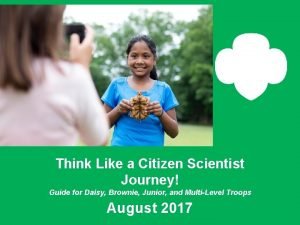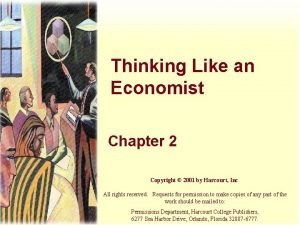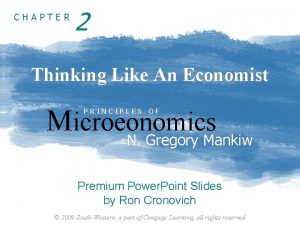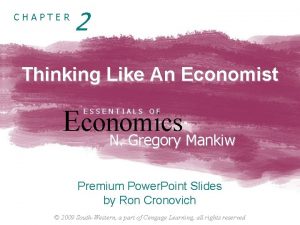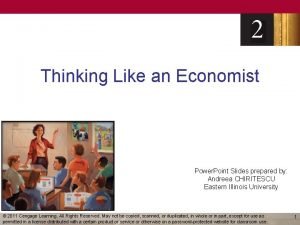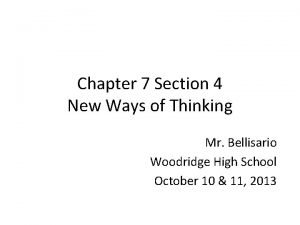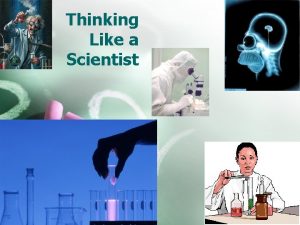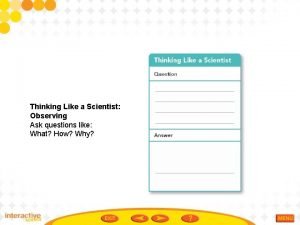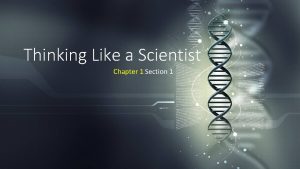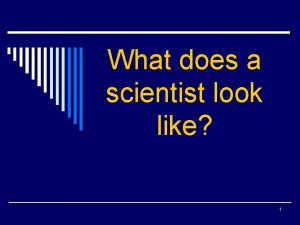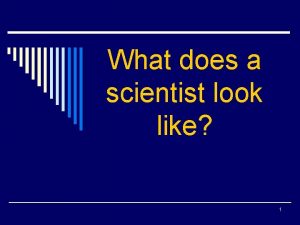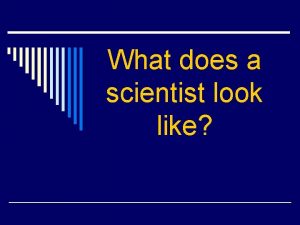Chapter 1 Section 1 Thinking Like a Scientist







- Slides: 7

Chapter 1, Section 1 Thinking Like a Scientist

KEY IDEA: Scientists use skills such as observing, inferring, predicting, classifying, and making models to learn more about the world and make scientific progress.

Observation Table talk: What ARE the five senses? • Uses the five senses to gather information • 5 senses: taste, touch, sight, smell, hearing • 2 types of observations: – Quantitative Observation: these observations deal with numbers or amounts. (Example: a scientist may study the number of bees that go in and out of a hive. ) – Qualitative Observation: These observations deal with descriptions that can’t be expressed in numbers. (Example: an artic fox’s fur changes color with the seasons)

Inference • what you know + what you learn • When you interpret or explain what is observed. • Based on reasoning Table Talk: Based on what you observe, infer why this student is smiling. • An inference may not always be correct.

Predicting • to make a forecast of what will happen in the future based on past experience or evidence. • Quickwrite: Make three predictions about school this week in your notebook.

Classification • The process of grouping like items together. • Quickwrite: classify these items into two separate categories: – – – Goldfish Dog Cat Shark Lion • Table talk: discuss your results with your table

Making Models • Creating representations of complex objects and processes – Example: map of Bengal Tiger habitats • Scale models show proportions between parts; Example: solar system See Discovery. Ed video: “How Scientists Work – What is Scientific Inquiry? ” 20 min. End
 Think like a citizen scientist journey requirements
Think like a citizen scientist journey requirements Thinking like an economist chapter 2
Thinking like an economist chapter 2 Thinking like an economist chapter 1
Thinking like an economist chapter 1 Chapter 2 thinking like an economist summary
Chapter 2 thinking like an economist summary Chapter 2 thinking like an economist
Chapter 2 thinking like an economist Thinking like an economist chapter 2
Thinking like an economist chapter 2 Chapter 7 section 4 new ways of thinking
Chapter 7 section 4 new ways of thinking Positive thinking vs negative thinking examples
Positive thinking vs negative thinking examples
